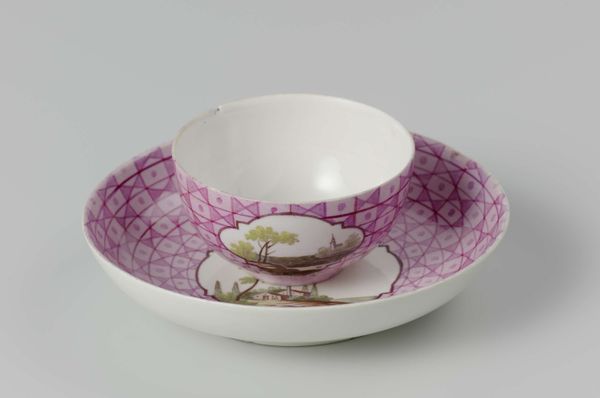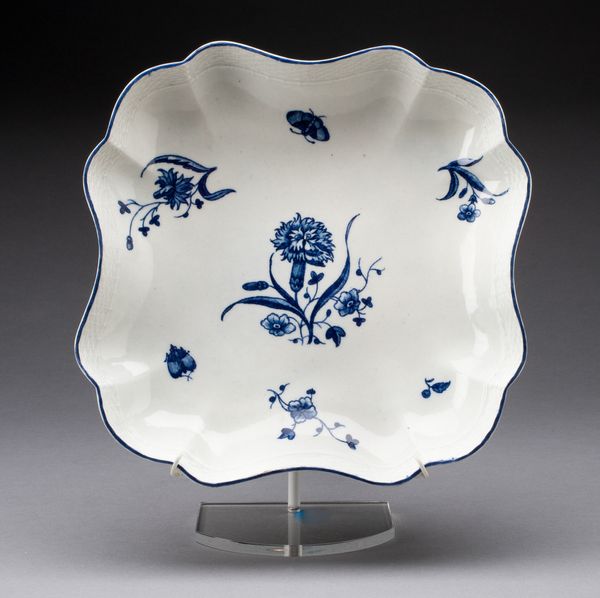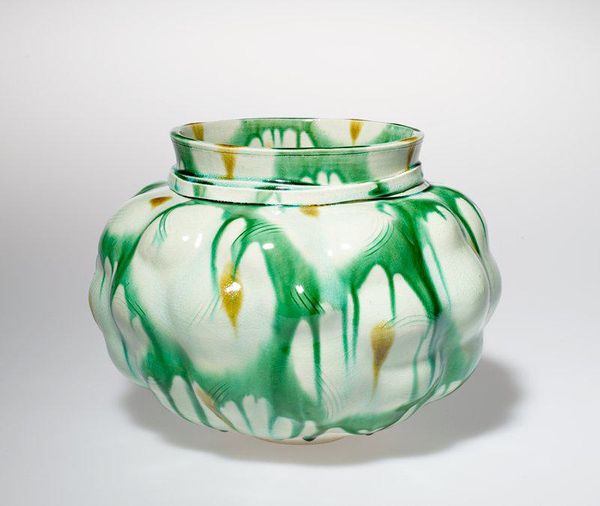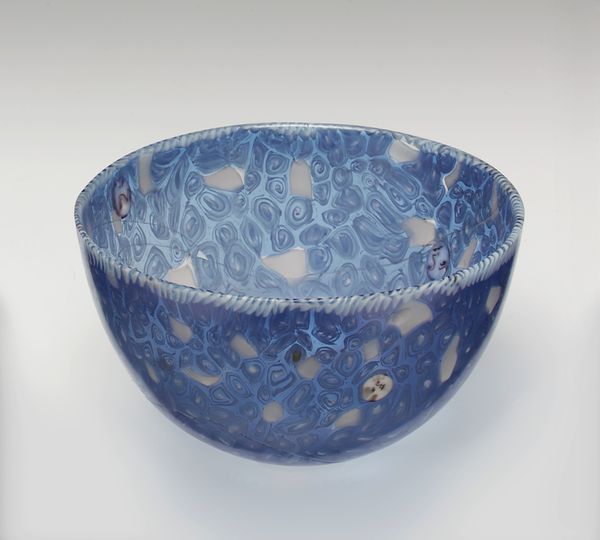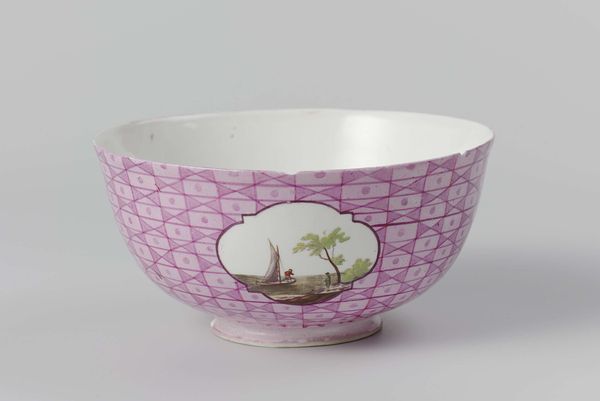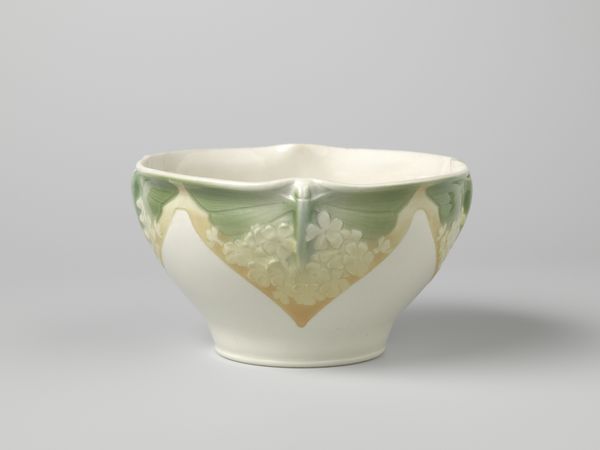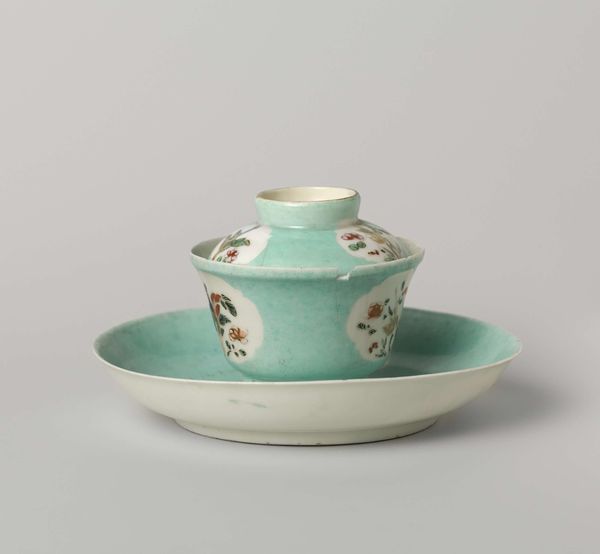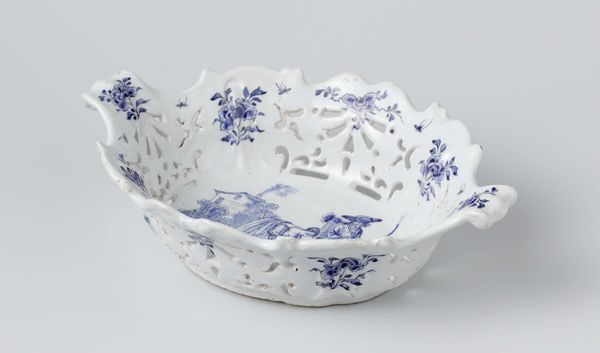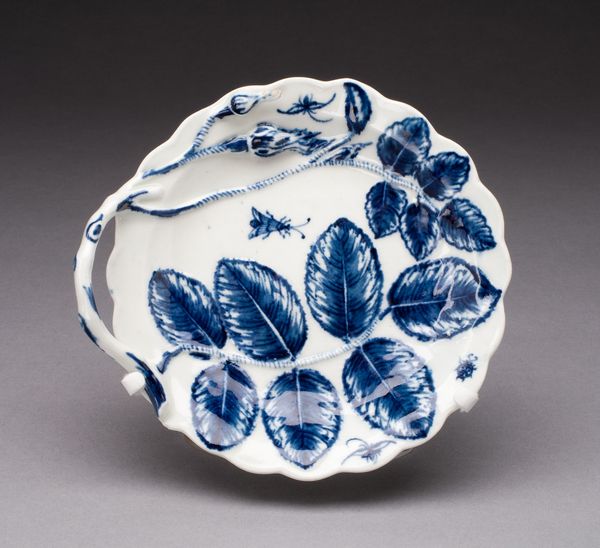
Dimensions: height 6.7 cm, width 22.5 cm, depth 22 cm
Copyright: Rijks Museum: Open Domain
Curator: Here at the Rijksmuseum we have a beautiful example of rococo ceramic work: this piece titled "Schaal", which translates to Bowl, was created by the Porseleinfabriek Den Haag between 1777 and 1790. Editor: My initial reaction is delight. The muted greens and blues create a delicate, almost dreamlike effect. It's charming, but it makes me wonder about the labor involved. Curator: Absolutely, examining its place in society highlights that these pieces reflected status. Porcelain was a luxury item and part of the growing culture of aristocratic collecting and display. The Porseleinfabriek catered to this market, showcasing refined taste and access to global materials. Editor: Right. And think about the material transformation. Earthen elements refined through intense heat and skilled hands... that handle looks particularly laborious, like shaped metal formed and attached to resemble a twig or branch. Were these artisans seen as skilled laborers or simply craftspeople, inferior to fine artists? Curator: That’s the tension, isn't it? The design aspires to this organic naturalism through intense control, echoing painting's representational drive while rooted in functional form. Editor: Indeed! And the rococo style, so ornate, trying to capture fleeting beauty… what was usually served on something like this? I am wondering if there were particular delicacies it usually served at court? Curator: Confections, perhaps. Rococo was very invested in lightness, elegance and often indulged in decoration, and confectionery did as well, being sculpted to imitate classical statuary or architectural marvels. The bowl and treat working in symbiosis, performing prestige. Editor: It’s remarkable to consider that fleeting indulgence as bound with the lasting presence of the bowl today. That contrast sharpens how much history gets preserved within even everyday items. Curator: Exactly, this object provides an opportunity to reconsider value. What and how are objects granted "high" status, and whose histories get left out? Editor: It makes you consider all the artistry baked into even commonplace objects like this, so worthy of respect, all the work made and value inherent to making, a beautiful sentiment to close on.
Comments
No comments
Be the first to comment and join the conversation on the ultimate creative platform.
